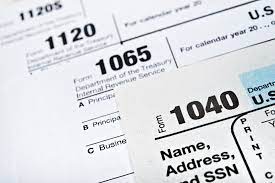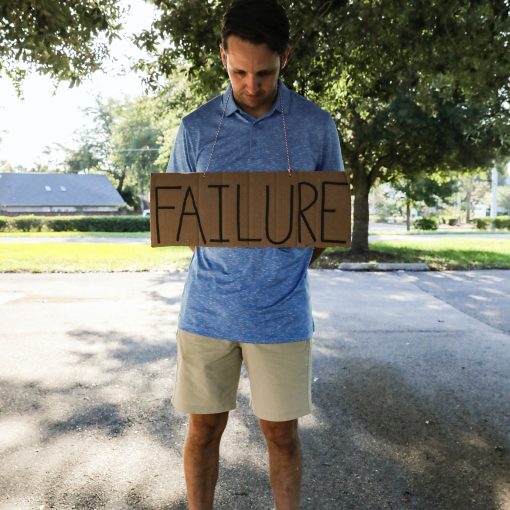In 2021, the SBA Inspector General suggested that nearly $80 billion of funding may have been fraudulent and the number is getting larger. However, while many criminal cases include complex investigations, finding EIDL or PPP fraud on the surface is quite easy. This article highlights how easy it really is to find those who may have committed COVID-19 Relief fraud and several techniques that the government can and probably is using to find those who committed fraud from the pandemic funding programs.
By Thomas Tramaglini, Managing Director at BRP Onesta
info@BRPOnesta.com
www.backofficedepot.com
www.thomastramaglini.com
About Thomas Tramaglini
Since the onset of COVID-19 Relief offered small businesses during the pandemic, fraud has been reported as rampant. Considerable action has been taken to underscore the importance of oversight as well. Since President Biden vowed to ramp up oversight of the Pandemic Programs passed by Congress during the Trump Administration and after as well, the Department of Justice has prosecuted many small business owners and legislation has been passed that make oversight a long-term reality.
However, finding pandemic fraud is not hard. Video evidence is not needed. The proof is in the data and the trail of data which applications can be tied to.
Pandemic fraud was easy.
Many small business owners (and some were not small business owners) used a host of different tactics to defraud the US Government’s PPP and EIDL programs from March 2020 through August 2021. Some of these tactics include bank and wire fraud, identity fraud, as well as the submission of false documents such as quarterly tax reports and taxes.
In our industry, we have seen fraud for many years. Commonly, we see fraudulent bank statements regularly, as well as other fake documents such as false payroll data, tax forms, etc. However, when the Trump Administration rolled out pandemic relief in good faith, many small business owners did not return
the favor. They saw “free money” and clearly did whatever it would take to get funded.
We have written extensively about many of the fraud cases and background of cases that continue to pop up in the news, as well as new indictments and convictions in the following articles:
- Plenty of Blame to Go Around: Who is to Blame for the Biggest Fraud in American History?
- Maseratis, Jaguars, Mercedes, Investments, Swimming Pools…. Getting Caught for PPP/EIDL Fraud.
- Getting Caught: Small Business Owners Committing EIDL and PPP Fraud.
- Increased PPP/EIDL Oversight: Three Things Small Business Owners Should Do Now.
- Fake 940/941s, More Lamborghinis, Rolexes and Real Estate Oh My.
- Spot Checks: No-Nos and Uh-Ohs of EIDL – SBA Spot Checks and Audits.
- The Frontline Zeroes of the Pandemic.
Small Business owners are accountable for what they attested to when submitting their pandemic relief applications
When small business owners filed applications for PPP and for EIDL, they attested that the information they were submitting was true. For instance, in the standard PPP application, the small business owner had to “certify that the information provided in this application and the information provided in all supporting documents and forms is true and accurate in all material respects. I understand that knowingly making a false statement to obtain a guaranteed loan from SBA is punishable under the law, including under 18 USC 1001 and 3571 by imprisonment of not more than five years and/or a fine of up to $250,000; under 15 USC 645 by imprisonment of not more than two years and/or a fine of not more than $5,000; and, if submitted to a federally insured institution, under 18 USC 1014 by imprisonment of not more than thirty years and/or a fine of not more than $1,000,000.”
Therefore, small business owners who knowingly filed requests for disaster relief funding knew in advance of accountability, and they hedged that they would never be held accountable for submitting false (or verifiable) information.
Evidence is Easy to Be Found
Unlike many criminal cases that are cloak and dagger and require massive, complex investigations to uncover hidden evidence, investigating COVID-19 fraud is relatively easy because there are verifiable data and a paper trail leading the way to who done it.
Anyone Can Mine EIDL and PPP Data
The SBA has released a host of PPP and EIDL data which can be found here:
BackOffice Depot Data for Download
Feel free to download all public data as because the data are public data under the Freedom of Information Act (FOIA).
Cross-Checking Data is Not Hard
In many cases, people believe that the government is not very smart.
However, what is needed to find fraud is not hard and the government does not have to be smart to outsmart stupid. Anyone who has access to data can find those who possibly committed fraud with a simple V Lookup or the use of a Pivot Table using Microsoft Excel. Here are a few simple ways that the government is using data to find those who may have committed fraud.
Were the companies who submitted applications, operating?
During review and underwriting their EIDL or PPP loans, the SBA and many lenders did not ask for articles of organization or incorporation or even back up that the company was operating. For instance, anyone can download any of the spreadsheets that we have on our website (see above) to pull the data for themselves. We have easily accessible datasets listing have every pandemic relief loan given from March 2020 through October 2021.
One can go through the list of businesses and just Google the businesses. It is easy to find businesses who are operating and who are not. Websites report scores of data on businesses including number of employees, how many trucks are in operation, and more.
The easiest data to find discrepancies are with the larger EIDL and PPP loans that were taken by small businesses. For instance, I was able to download all loans for PPP over $150K and then sort the column with loan amounts. I was easily able to then choose 10 loan recipients at random. Just in my cursory review I was able to find 1 trucking company that received $700,000+ but they only had listed on the USDOT site that they had 2 trucks. The same business also showed on the EIDL website that they had listed 4 employees. Given the PPP rules for how much salary was able to be delivered in funding, something there seems fishy. The other company I found listed in the 10 companies I reviewed also received $700K+. The company seemed to not have a website, business in good standing, did not file an annual report for more than 6 years, or have any notable information which demonstrated a legitimate business. I even Googled the business address, and the business address was a vacant home sold more than 2 years ago.
Matching tax data with PPP/EIDL Applications
Tax data. It is that simple.
Simply put, the IRS has a record of every tax return and report of quarterly payroll data.
One can easily take the PPP dataset, combined with the data from the IRS (which the Department of Justice or Inspector General for the SBA) should be able to cross-reference using a V Lookup or Pivot Table and find matching and non-matching numbers. Those who submitted quarterly payroll data (940/941) which does not match the IRS records should immediately be investigated.
I am going to guess (however, I cannot give the government that much credit) that the IRS and SBA have begun cross-checking these data and found many fraudulent applications.
The same governmental agencies should also be able to cross-check income from 1040s or 1120 (or other forms) to see if what was submitted was really what was submitted. That is, many people or small businesses do not file taxes. However, when submitting their applications everyone did. It wasn’t until much later on during the pandemic that the SBA began asking for tax transcripts. One can only think of the millions of loans that were approved without any check of tax forms or the infamous 3506T review.
Were some people really that stupid?
The answer is yes.
As aforementioned above, we have written extensively on the subject, as far as ranking the most dubious losers who defrauded the government.
Congress recently passed legislation that extends the statute of limitations out to 10 years for pandemic fraud. It is likely that those who cheated, will be called on it.
Dr. Thomas Tramaglini is the Managing Director for BRP Onesta, a company that supports small businesses. By offering a host of important and affordable services that small business owners tend to not have time to do themselves, the team at BRP Onesta can help small businesses grow infinitely. Although located in on the famous Jersey shore, BRP Onesta serves clients in all 50 states, Puerto Rico, Mexico and Canada.






